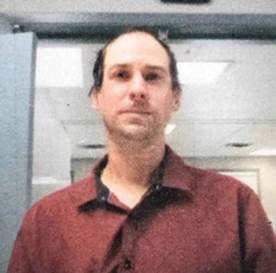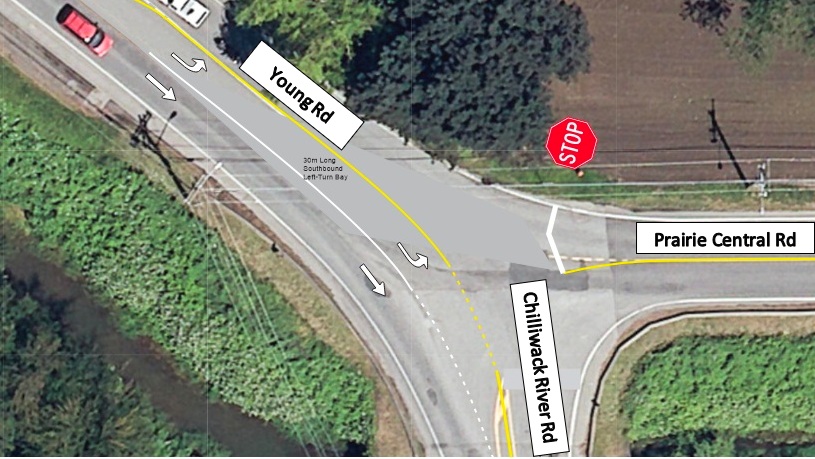Kent – Kent/Agassiz Fire Chief Gerald Basten has posted a timeline and recovery summary for his crew , in handling the flood disaster.
On November 14 at 3:38 p.m., the Agassiz Fire Department (AFD) was dispatched to assist a resident with flooding in their crawl space. Then at 5:24 p.m., the AFD responded to Rockwell Drive for a reported landslide involving a vehicle. Once on scene, firefighters were faced with reports of multiple slides and a vehicle stuck in the debris field. There were no injuries.
At 7:29 p.m. the AFD was dispatched to a landslide in the 10000 block of the Lougheed Highway (Seabird Bluffs, 8 km east of Agassiz) with callers reporting being washed off the road and over an embankment. The call very quickly escalated to reports of multiple vehicles involved, people trapped in vehicles, hydro wires down on top of vehicles, and finally, reports of vehicles on fire. The AFD responded with Rescue 1, Engine 1, Tender 1, and Car 1 with the Fire Chief. The Seabird Island Fire Department also responded with their Engine 1. When the first apparatus arrived on scene, the initial assessment included a confirmed energized electrical scene (65000 KV lines down), a landslide that stretched close to 150 meters along the north shoulder of the Lougheed Highway before it spilled across the roadway covering another 200 meters in width and reaching close to the Canadian Pacific Railway line.
Due to the numerous 911 calls and with ECOMM fire dispatch centre relaying what callers were seeing to the AFD, it was difficult to gain an accurate understanding of the magnitude of the slide, and the number of vehicles and people involved. Incident command (I/C) requested that Hope Fire Department be dispatched to the north side of the slide as AFD crews could not access anything north of the initial slide. Hope Search and Rescue (HSAR) responded to the north side with their road rescue unit. Unfortunately, Kent Harrison Search and Rescue (KHSAR) was unable to respond as they were impacted by the earlier slide on Rockwell Drive, which prohibited vehicle travel through. BC Hydro looked after de-energizing the hydro lines to make the area safe.
While sizing up the incident and attempting to develop an action plan to rescue the trapped occupants of the impacted vehicles, a second and third landslide was heard on the mountainside directly behind the rescuers. At this point, the AFD broadcast an emergency evacuation and crews were forced to retreat to a safer position, situated at the Seabird Island Gas Bar. A request was made to Emergency Management BC (EMBC) to have Canada Task Force 1 Heavy Urban Search and Rescue team (CT1-HUSAR) respond.
The trapped occupants continued to call 911 and provide updates. Many of the calls became pleas for help as their vehicles were quickly filling with water. Two more 911 calls reported medical emergencies for people that were trapped. The incident continued to escalate quickly, and it was clear that rescue efforts could not be delayed. An action plan was formulated and the AFD immediately began to execute.
The rescue plan included a coordinated response including fire apparatus utilized as blockers and to provide safe zones in the event of more slides; BC Ambulance Service (BCAS) available to attend to the injured; and BC Hydro to de-energize and ensure a safe work environment. The AFD began to make their way to the stranded victims through the debris field consisting of mud and shale and trees, some of which were 1 to 2 meters in diameter. With the water levels rising rapidly and the conditions deteriorating quickly, 19 AFD firefighters jumped into action to rescue 9 trapped motorists. A chain was formed to pass the rescued from firefighter to firefighter until they were through the debris field and transferred to BCAS. The conditions encountered in the debris field included fast moving and freezing water, logs, and thick quicksand like mud. By 2:00 a.m. all the trapped motorists had been rescued, transferred to BCAS, and transported to hospital in a waiting BCAS bus. The rescue was truly a coordinated effort between BC Hydro, BCAS and AFD! It is unlikely that many of the rescued would have survived the night in those conditions.
While the AFD worked on the south slide, the HSAR rescued five people that were washed off the road in their minivan from a second slide. The HSAR had made their way over the north debris field and back to rescue the family of five including one of who suffered a critical head injury. Three were transported by BCAS and two transported by private vehicle to the Fraser Canyon Hospital in Hope.
The CT1-HUSAR team arrived shortly after and immediately began to gather information to develop a plan for the next operational period to rescue the estimated 300 stranded motorists from between the two slides. In the following days, the AFD worked with the CT1-HUSAR to rescue the stranded motorists and search for any further victims. Three Canadian Armed Forces Cormorant 442 helicopters were used to bring close to 300 motorists to safety to the Agricultural Hall in Agassiz. The Kent Harrison Emergency Support Services (ESS) established a reception centre to process the evacuated and provided overnight group lodging.
Each day, as the water levels receded, more vehicles would surface and need to be checked. For seven days, the AFD checked daily until it was determined that all vehicles had been located and checked.
The Agassiz Fire Hall was the incident command post for operations and served as overnight accommodations for the 35 CT1-HUSAR team members. While Council Chambers in Municipal Hall hosted the District of Kent’s (District) Emergency Operation Centre.
In addition to all the rescue work being conducted on the Lougheed Highway, the AFD also responded to Kamp Road to investigate flooding at 3:30 a.m. In this case Kamp Road was under water for close to 100 metres. As there was no immediate action that could be done, the AFD worked with the District’s Public Works department to monitor the water levels until they sufficiently receded to be able to enter the area safely to assess for damage.
November 15 was a long day of rescues and searches for the AFD. Crews were packing up for the day at 6:00 p.m. only to be called back for a reported barn fire at 6:30 p.m. Thankfully the fire was contained by the owners to one room. AFD overhauled the damaged area and declared the fire out by 7:30 p.m.
While attending the barn fire, the AFD also responded and dealt with a motor vehicle incident on Morrow Road. The wreck was minor and easily handled. To close out the day at 11:20 p.m., the AFD was dispatched to a residential structure fire in the 3900 block of Hot Springs Road. This fire was contained to the exterior cladding on the home, with some extension inside the wall. With the fire quickly looked after, the AFD cleared by 1:30 a.m.
The week following the landslide included a frenzy of activity at the Agassiz Fire Hall with response to follow up needs related to the Lougheed Highway landslide. AFD crews attended to the clean-up and restocking of equipment and apparatus.
It was truly a miracle that no lives were lost in any of the landslides in the area, as well no injuries to firefighters while undertaking the extremely high-risk rescue operations.
Gerald Basten
Fire Chief
604-796-2614
Click on the link to read Fire Chief Basten's summary of events from the atmospheric river.https://t.co/w2yHVthRww
— KentBC (@KentBC1) December 9, 2021






